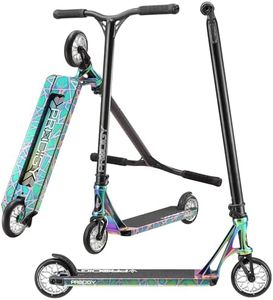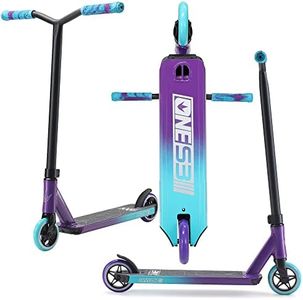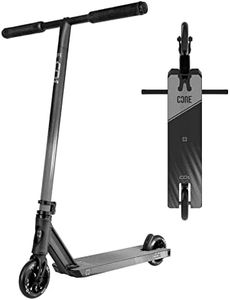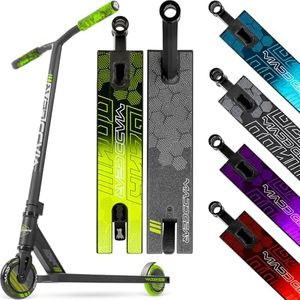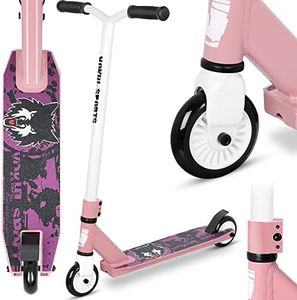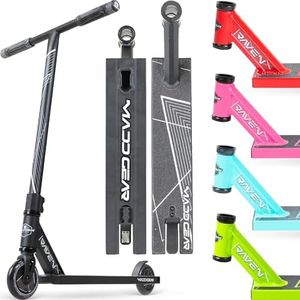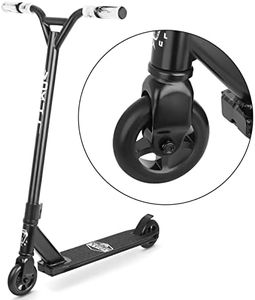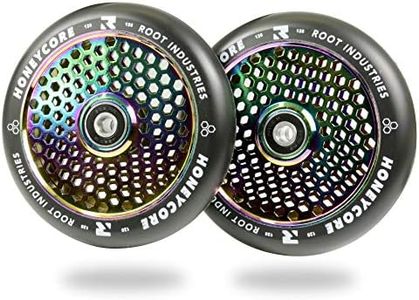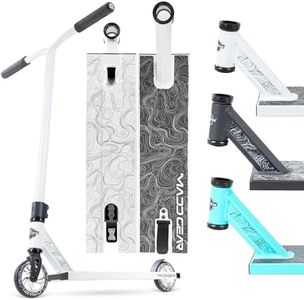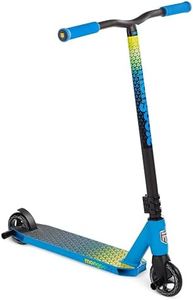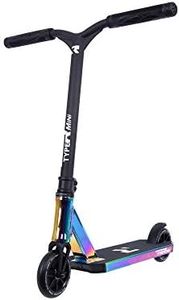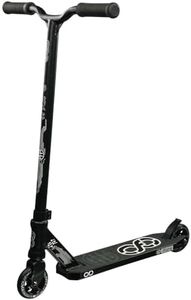We Use CookiesWe use cookies to enhance the security, performance,
functionality and for analytical and promotional activities. By continuing to browse this site you
are agreeing to our privacy policy
10 Best Trick Scooters
From leading brands and best sellers available on the web.Buying Guide for the Best Trick Scooters
When choosing a trick scooter, it's important to think about how and where you'll use it. Trick scooters, also known as stunt scooters, are made for performing jumps, spins, and other tricks, so they need to be strong and lightweight. Consider your skill level, the types of tricks you want to learn, and your body size. The right scooter will help you progress safely and comfortably.Deck SizeThe deck is the platform you stand on. Its size affects your balance and comfort. Wider and longer decks provide more stability and space but can be heavier and harder to maneuver for smaller riders. Shorter and narrower decks are lighter and better for quick tricks, but may feel cramped for those with larger feet. Beginners might prefer a slightly wider deck for stability, while advanced riders focused on technical tricks often go for narrower options.
Bar Height and WidthThe handlebars should be at the right height and width for you to control the scooter well. Height is usually measured from the ground to the top of the bars and should reach around your waist when standing on the deck. Wider bars give more control for spins, while narrower bars are easier to whip around for tricks. Consider your own height and whether you prefer stability or agility in your tricks.
WeightThe weight of a stunt scooter affects how easy it is to lift and spin during tricks. Lighter scooters are favored for technical moves and younger or smaller riders, as they're easier to handle in the air. Heavier scooters are often more durable, which can be good for adults or those doing bigger jumps. Think about the kinds of tricks you'll be doing and choose a weight that matches your strength and riding style.
Wheel SizeWheel size, measured in millimeters, influences speed, stability, and trick performance. Smaller wheels (about 100 mm) are common for quick acceleration and easier tricks, making them suitable for park riders. Larger wheels (110 mm or more) roll faster and more smoothly, offering better stability on rough surfaces, great for street riders. Choose the wheel size based on where you'll mostly ride—park or street—and your personal preference for speed and agility.
Compression SystemThe compression system is part of how the bars, fork, and deck connect. It affects the strength and smoothness of your scooter, and how easy it is to maintain. Simple systems are okay for beginners or light use, while higher-end ones give more strength and reliability for advanced tricks and heavier use. If you're just starting, a basic system will do, but as you progress, you may want a system that's easier to adjust and can handle more stress.
MaterialMost trick scooters use aluminum or sometimes steel. Aluminum makes scooters lighter and is a common choice for trick riders, helping with aerial moves and spins. Steel is heavier but often stronger, so it’s good if you expect to treat your scooter roughly. Think about whether you value easier tricks (go light) or want something more solid and durable (consider slightly heavier options).
